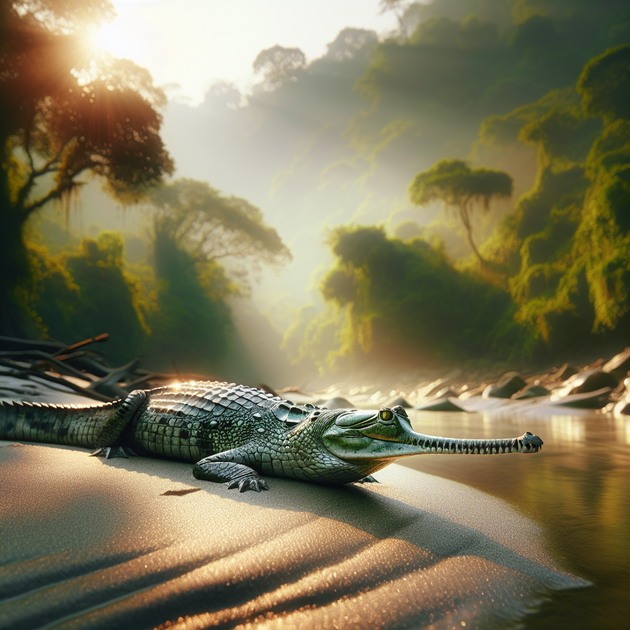What animal has a jaw like a chopstick and is so rare that fewer than 1,000 survive in the wild? Meet the gharial, a remarkable crocodilian native to India and Nepal—and one of the most threatened reptiles on Earth.
What Makes the Gharial So Unique?
The gharial isn’t your typical “croc.” With its long, narrow snout lined with more than 100 sharp teeth, it looks almost prehistoric—like something you’d expect in a dinosaur movie rather than a modern river. This specialized jaw isn’t just for show; it helps the gharial catch fish with incredible speed and precision.
A few quick facts about this fascinating reptile:
- Scientific name: Gavialis gangeticus
- Distinctive feature: Elongated snout (males have a bulbous growth called a “ghara” at the tip)
- Diet: Mostly fish
- Main habitat: River systems of northern India and southern Nepal
- Status: Critically endangered (IUCN Red List)
Unlike other crocodilians, gharials rarely attack humans—they’re far more interested in chasing fish than bothering people.
The Current Status of the Gharial Population
The numbers are sobering. As of today, there may be as few as 650 adult gharials left in the wild according to recent surveys by conservation groups (National Geographic). Their strongholds are mainly found along rivers like the Chambal in India and sections of the Narayani and Rapti rivers in Nepal.
So what happened? Just a century ago, gharials were thriving across much of South Asia’s major rivers. Now they’re confined to less than 2% of their historic range.
Why Are Gharials Disappearing?
Several factors have pushed these gentle giants toward extinction:
- River pollution: Industrial waste and pesticides poison their watery homes.
- Dams and water diversion: Major projects disrupt natural river flow—affecting breeding grounds.
- Sand mining: Extracting sand destroys nesting sites along riverbanks.
- Fishing nets: Gharials get accidentally trapped while fishermen seek other catches.
- Lack of prey: Overfishing leaves less food for these fish specialists.
Protecting their habitat is crucial not only for gharials but also for countless other species that depend on healthy rivers.
A Close Encounter With A River Giant
Years ago while visiting northern India’s Chambal River Sanctuary—a place famous for its wildlife—locals pointed out what looked like a floating log with eyes peeking just above water. As we drifted closer (quietly!), it became clear we’d spotted an adult male gharial basking on a sandbank. Its snout was so thin it almost disappeared against the shimmering waterline.
The boatman explained how local communities used to fear all “crocodiles,” but now they know gharials are harmless to humans. They even help educate visitors about conserving these unique reptiles.
The Future for Gharials—and Why It Matters
Why should we care about saving such an odd-looking animal? For starters, gharials play an important role in their ecosystem by keeping fish populations balanced. They’re living indicators of healthy rivers—which everyone needs for drinking water, farming, and livelihoods.
Plus, losing any ancient creature like this means erasing millions of years of evolution overnight.
If you want to learn more or support efforts to protect them, organizations like the Gharial Conservation Alliance are working hard on research and education projects across South Asia.
The next time you think about alligators or crocs, remember there’s another cousin out there fighting for survival—with one of nature’s most unusual smiles.
Would you like to see the gharial make a comeback—or will it fade away unnoticed?

Leave a Reply